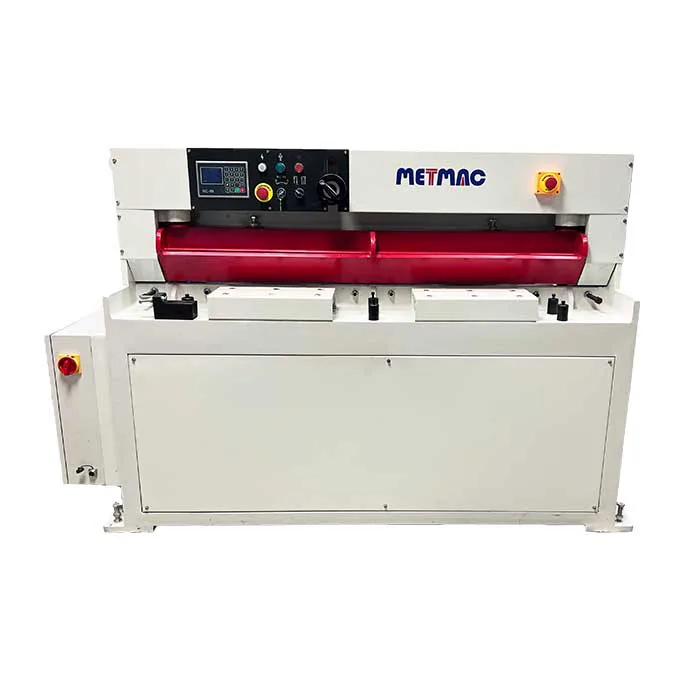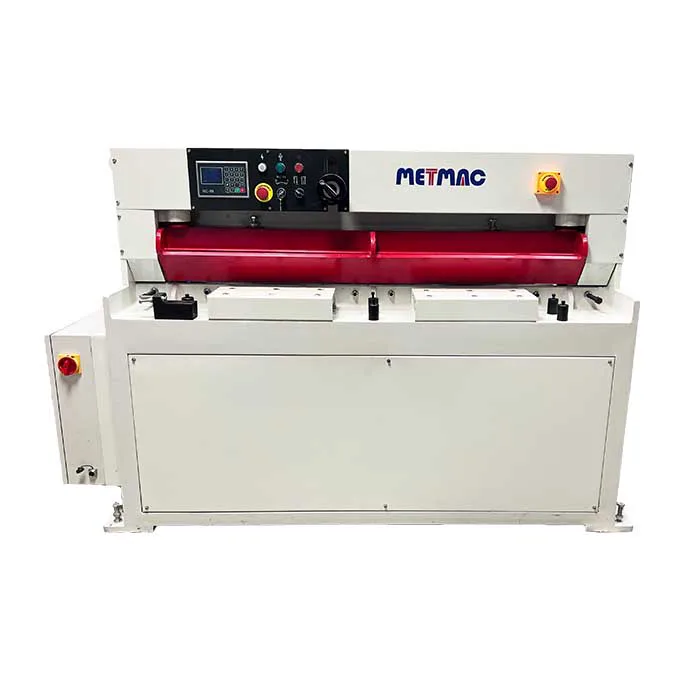
How Plate Bender Machines Impact Workflow Efficiency
- By:Metmac
- 2024-08-05
- 106
In the realm of metalworking, plate bending machines play a pivotal role in transforming raw metal sheets into complex shapes with precision and efficiency. These machines have revolutionized the industry, enabling manufacturers to streamline their workflow and enhance productivity. This article delves into the multifaceted ways in which plate bending machines impact workflow efficiency.
Increased Production Capacity
Plate bending machines enable manufacturers to produce a higher volume of parts in a shorter timeframe. By automating the bending process, these machines eliminate the need for manual labor, minimizing the time it takes to complete each bend. This increased capacity allows companies to meet higher demands, fulfill orders faster, and increase their overall revenue.
Reduced Labor Costs
Manual bending is a labor-intensive process that requires skilled operators, which can drive up labor costs. Plate bending machines, on the other hand, drastically reduce the need for manual labor. They can be programmed to perform complex bends with minimal operator intervention, freeing up skilled workers for other tasks. This labor cost reduction contributes to significant savings over time.
Improved Accuracy and Consistency
Plate bending machines ensure unparalleled accuracy and consistency in bending operations. They utilize sophisticated software to control the bending process, eliminating the risk of human error. This precision ensures that every part is manufactured within tight tolerances, reducing scrap rates and enhancing product quality.
Enhanced Safety
Traditional manual bending methods pose significant safety risks to operators, including crush injuries, cuts, and repetitive motion disorders. Plate bending machines, however, minimize these risks through automated operation. They feature safety guards and interlocks that prevent accidents and protect the well-being of workers.
Space Optimization
Plate bending machines are designed to be compact and space-efficient. They can be easily integrated into existing production lines without requiring significant floor space. This space optimization allows manufacturers to maximize their workspace and improve overall plant efficiency.
Customization and Automation
Plate bending machines offer a high level of customization and automation. Manufacturers can choose from a wide range of machine configurations and features to meet their specific requirements. The machines can be equipped with automatic tool changers, material feeders, and digital readouts for enhanced flexibility and efficiency.
Integration with Other Systems
Plate bending machines can be seamlessly integrated with other systems, such as CAD/CAM software and material handling equipment. This integration enables manufacturers to automate the entire fabrication process, from design to production. By eliminating manual data entry and transferring data directly from the design team to the bending machine, manufacturers can streamline workflow, minimize errors, and reduce lead times.
Conclusion
Plate bending machines have become indispensable tools in the metalworking industry, profoundly impacting workflow efficiency. Their ability to increase production capacity, reduce labor costs, improve accuracy, enhance safety, optimize space, offer customization, automate processes, and integrate with other systems has revolutionized the manufacturing landscape. By embracing these machines, manufacturers can gain a competitive edge, improve their bottom line, and deliver high-quality products to their customers with unprecedented precision and efficiency.
-
Sheet Metal Machinery for Sale: Elevate Your Fabrication Capabilities with METMAC
2025/11/26 -
Laser Sheet Cutting Machine: Redefining Precision with METMAC Technology
2025/11/26 -
Sheet Shearing Machine: Achieving Unmatched Precision and Efficiency with METMAC
2025/11/26 -
Sheet Metal Forming Machine: The Art of Precision with METMAC Technology
2025/11/26
-
Advanced Sheet Metal Rolling, Laser Cutting, and Folding Machines for Precision Fabrication
2025/10/31 -
High-Performance Sheet Metal Bending and Cutting Machines for Modern Fabrication
2025/10/31 -
High-Quality Sheet Metal Equipment for Sale: Efficient Solutions for Modern Manufacturing
2025/10/31 -
High-Performance Sheet Metal Equipment for Sale: Forming and Shearing Solutions for Modern Fabrication
2025/10/22
-
Understanding the Role and Function of Steel Strip Slitting Machines
2024/05/11 -
Maintenance Tips for Longevity of HVAC Duct Machines
2024/05/11 -
Innovations in Steel Strip Slitting Machine Design and Technology
2024/05/11 -
Improving Accuracy in Metal Fabrication with Laser Metal Shear Machines
2024/05/11
-
A Guide to the Latest Innovations in Sheet Metal Folding Machines
2024/11/29 -
Key Features to Consider When Investing in a Sheet Metal Folding Machine
2024/11/28 -
Enhancing Precision with Advanced Sheet Metal Folding Machines
2024/11/27 -
How to Choose the Right Sheet Metal Folding Machine for Your Workshop
2024/11/26







